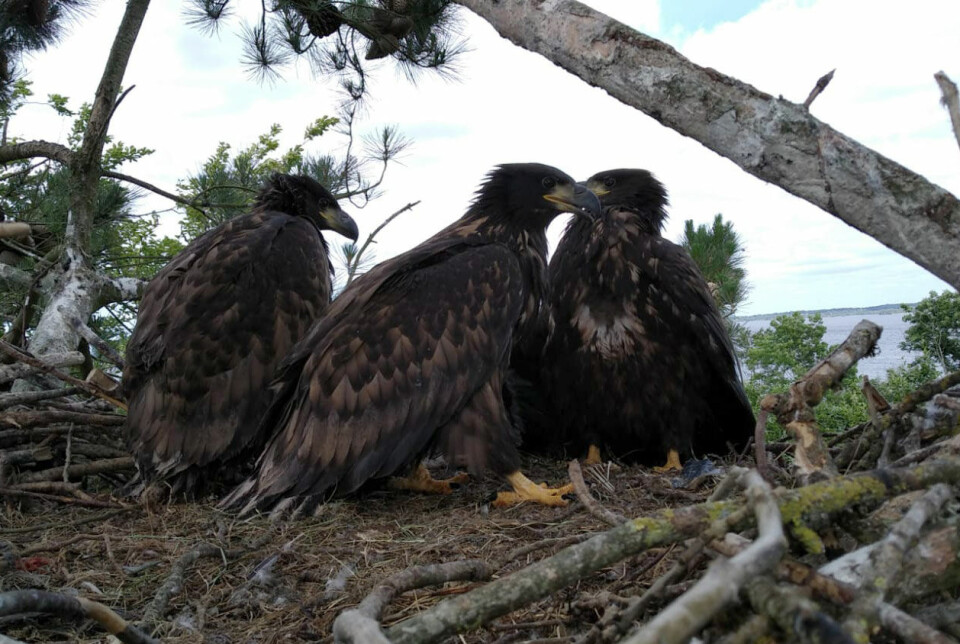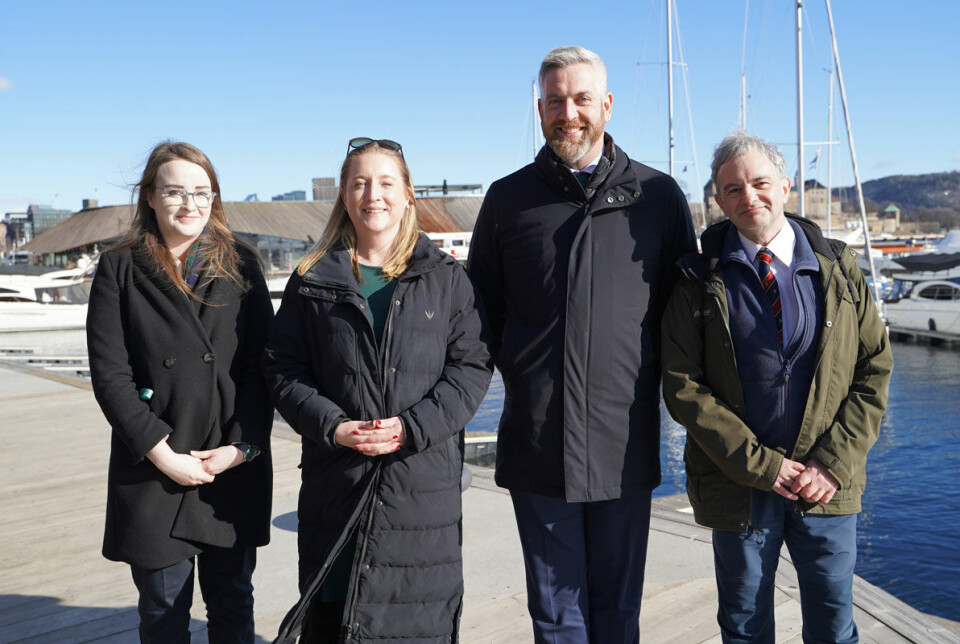THIS CONTENT IS BROUGHT TO YOU BY NINA - Norwegian Institute for Nature Research - read more
Norwegian white-tailed sea eagles are helping to rebuild a lost population in Ireland
200 Norwegian sea eagle chicks have found a new home in Ireland since the project began in 2007. This summer, the last fledglings will be released.

Like many other predators and birds of prey, the sea eagle has historically been seen as a competitor for game and fish resources and a threat to livestock, leading to intense persecution.
As a result, the sea eagle disappeared from much of its natural range in Europe.
In Norway too, the sea eagle has been under threat. But since its protection in 1968, the population has grown significantly. Norway now has Europe's largest breeding population.
Norway is therefore in a unique position to help re-establish extinct sea eagle populations elsewhere. The sea eagle project in Ireland is a shining example that it is actually possible.
Back after a century
A century after the last sea eagle disappeared, Irish authorities initiated an ambitious reintroduction project. The goal was to bring the sea eagle back.
The project was carried out in two phases, in collaboration with the Norwegian Institute for Nature Research (NINA) and BirdLife Norway.
In the first phase of the project, from 2007 to 2011, 100 birds were released in Ireland. They soon adapted to their new environment and managed surprisingly well. However, they were too few to fully secure the population against events such as the global bird flu pandemic. It claimed the lives of two of the first breeding adults in Ireland and a number of immature birds.
“A small population is more vulnerable to unforeseen events, and with so few individuals, it's also more difficult to find a mate and form stable pairs,” says Duncan Halley. He is a senior research scientist at NINA.
From 2019 to 2024, an additional 100 birds were sent from Norway to Ireland. And that really got things moving.

The development of the Irish population has progressed well following the bird flu pandemic. The first Irish-born sea eagle bred already in 2020. It was a young female that had paired up with an older male that came from Frøya in 2007.
The following year, the first of several sets of triplets were also born.
“Triplets are a rarity among sea eagles, and it's also unusual that they breed at such a young age as we have seen in Ireland. This shows how favourable the conditions are there,” says Halley.
Today, 15 pairs are established in Ireland. They are spread over a vast area. In 2024, a pair of eagles from Trøndelag successfully bred in Ireland. They were both four years old, which is earlier than what is normal for the species. This is another indication of the favourable conditions for the developing population.
More pairs are forming as the new birds mature. And they continue to expand in both numbers and range.
The last flight
The project has been an unqualified success, and this summer the last group of Norwegian sea eagle fledglings will be sent to Ireland.
“Thanks to the excellent cooperation between Irish and Norwegian authorities, and the irreplaceable efforts of many local volunteers in both countries, we have now achieved our goal: an independently viable and growing sea eagle population in Ireland!" says Halley.
He adds that while their Irish colleagues will continue to monitor progress, the Irish sea eagles are now soaring on their own wings and, over time, should grow in number to reoccupy the coasts and freshwaters of the entire island.

Ospreys next
But the collaboration doesn’t stop there.
A new restoration project aims to reintroduce the osprey to the southern part of the island, where it was eradicated 200 years ago.
The first nine ospreys were sent over in 2023. According to the plan, more will follow in the coming years.
Cooperation is key. Christopher O’Sullivan (Irish minister for Nature, Heritage and Biodiversity) and Duncan Halley (senior research scientist at NINA) are equally enthusiastic about the white-taled sea eagle reintroduction programme.
Read more about the project: Restoring populations of white-tailed sea eagles in Europe

This content is paid for and presented by NINA - Norwegian Institute for Nature Research
This content is created by NINA's communication staff, who use this platform to communicate science and share results from research with the public. NINA is one of more than 80 owners of ScienceNorway.no. Read more here.
More content from NINA:
-
How will climate change affect lakes worldwide?
-
White-tailed sea eagles are breeding in Ireland again after more than a century
-
Could a tunnel help wild reindeer in Norway?
-
1 in 4 freshwater species are at risk of extinction: "It's not too late to take action"
-
Insects prefer cold winters with lots of snow
-
Weather radars reveal where birds migrate




































